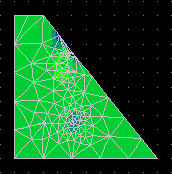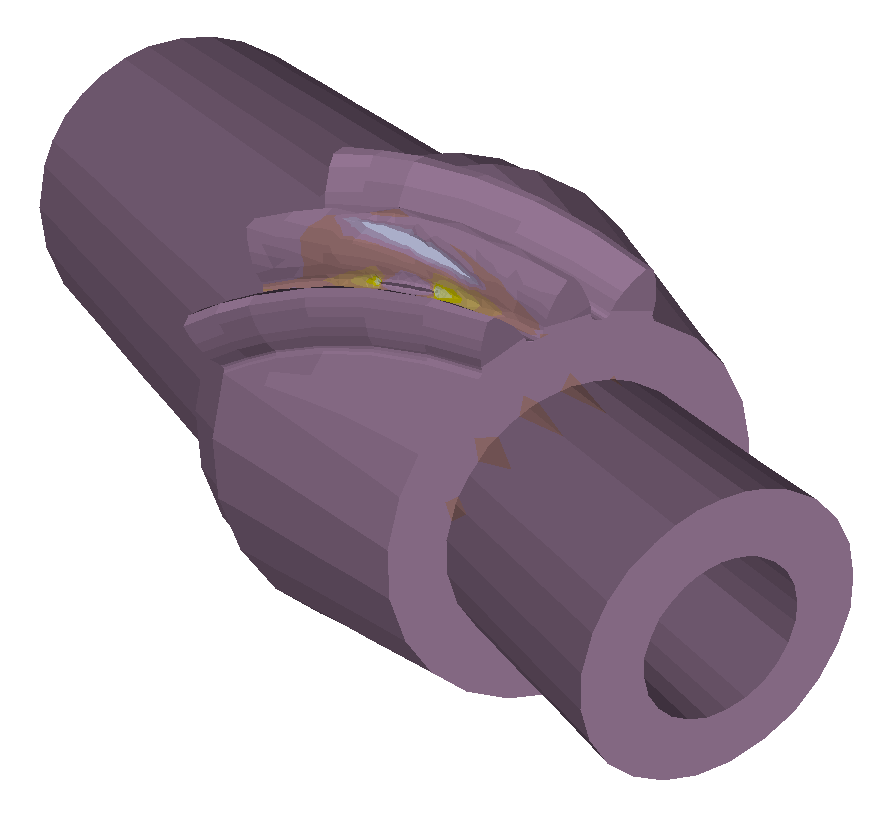|
|
What are the results of a computer simulation? |

|
This is what the model looks like after the program has
grown the crack. The tips of the cracks have moved to where
you see the blue patches.
This is called a stress contour. A stress contour shows how much force the
structure is feeling in different places by using different colors. |
| One
example of a computer simulation program for cracking
is a "FRacture ANalysis Code" called FRANC2D (#) which
was written and developed at Cornell
University (#) by the Cornell
Fracture Group (#). There is also a 3d version called FRANC3D (#) which
will analyze three-dimensional crack growth in structures.
 Civil engineers often use programs like FRANC to run simulations. Civil engineers often use programs like FRANC to run simulations.
What kinds of things have been analyzed with FRANC2D and FRANC3D? Just about everything
that cracks. Here are some examples of things that have been analyzed: |
the pavement of sidewalks and streets
in 2d
a helicopter gear in 3d (seen here)
material for high-speed airplanes
a leg bone
arch dams
gravity dams
|

|
As you can see, fracture mechanics can be applied to many different
subjects, which makes it very inter-disciplinary. This means that many
different fields can make use of fracture mechanics, including biomechanics,
geotechnical engineering, structural engineering, mechanical engineering,
hydraulic engineering, and many more.
In the Simulation section you'll be performing a
simulation using a web-version of FRANC2D!
Who are the people who have developed the
concepts of fracture mechanics and the computer programs to use them?


|




